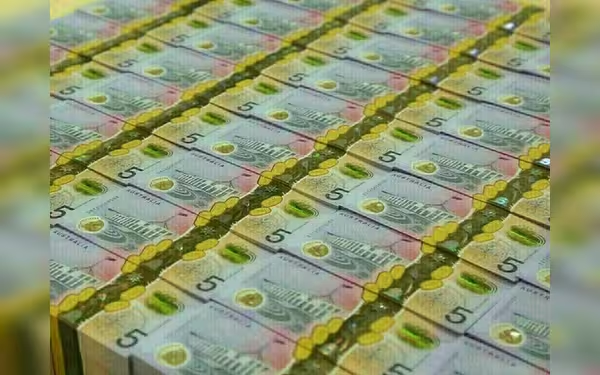Saturday, November 16, 2024 11:20 PM
Australian And New Zealand Dollars Surge As Risk Assets Rally
- Aussie approaches nine-month high amid positive economic sentiment.
- Kiwi records significant gains, driven by easing expectations.
- Market anticipates delayed rate cuts from RBA and RBNZ.
 Image Credits: brecorder
Image Credits: brecorderAustralian and New Zealand dollars rise as optimism grows around risk assets and potential policy easing.
In recent financial news, the Australian and New Zealand dollars have been making headlines as they approach their highest values for the year. This surge is largely attributed to the growing optimism surrounding risk assets, which has been fueled by expectations of aggressive policy easing in many developed countries. As investors look for opportunities, the Australian dollar, often referred to as the "Aussie," has shown remarkable resilience.
On Friday, the Aussie was trading at $0.6807, following a notable climb to a nine-month high of $0.6839 the previous night. This represents a 1.5% increase for the week, with aspirations to reach a peak of $0.6871, a level last seen in December of the previous year. Additionally, the Aussie has appreciated by 2.5% against the Japanese yen, now standing at 96.78, as interest in carry trades has reignited.
Meanwhile, the New Zealand dollar, commonly known as the "kiwi," was recorded at $0.6234, having peaked at $0.6269 overnight. This marks a 1.3% increase for the week, although it still falls short of the August high of $0.6298. Both currencies, heavily reliant on commodity exports, tend to perform well during periods of economic easing, as they are closely tied to global growth.
The recent boost for the Aussie can also be linked to a positive jobs report, which has led markets to reassess the likelihood of immediate rate cuts from the Reserve Bank of Australia (RBA). Even the Commonwealth Bank of Australia (CBA), known for its cautious stance, has adjusted its predictions, now suggesting that any rate cuts may be pushed back to December instead of November. Other major banks are also in agreement, indicating that no changes are expected until at least February.
Gareth Aird, the head of Australian economics at CBA, noted, "Recent strength in employment growth coupled with still relatively hawkish rhetoric from the RBA Governor means we now see December as the more likely month for the start of normalising the cash rate." He further added, "We have made no changes to our base case for 125 basis points of policy easing by the end of 2025 that would take the cash rate to 3.10%." Currently, markets are pricing in a 27% chance of a rate cut in November and a 68% chance for December.
On the other hand, the Reserve Bank of New Zealand has surprised many by initiating its easing campaign earlier than expected, starting with a quarter-point cut to 5.25% in August. The market is fully anticipating another quarter-point cut in October, with a 41% chance of a more significant 50 basis point reduction. Swaps are indicating that 85 basis points of easing could be in play by Christmas, projecting rates to settle at 2.87% by the end of 2025.
The movements of the Australian and New Zealand dollars reflect broader trends in global economic sentiment and monetary policy. As investors navigate these changes, it is crucial to stay informed about potential shifts in interest rates and economic indicators. Understanding these dynamics can help individuals and businesses make more informed financial decisions in an ever-evolving market landscape.













